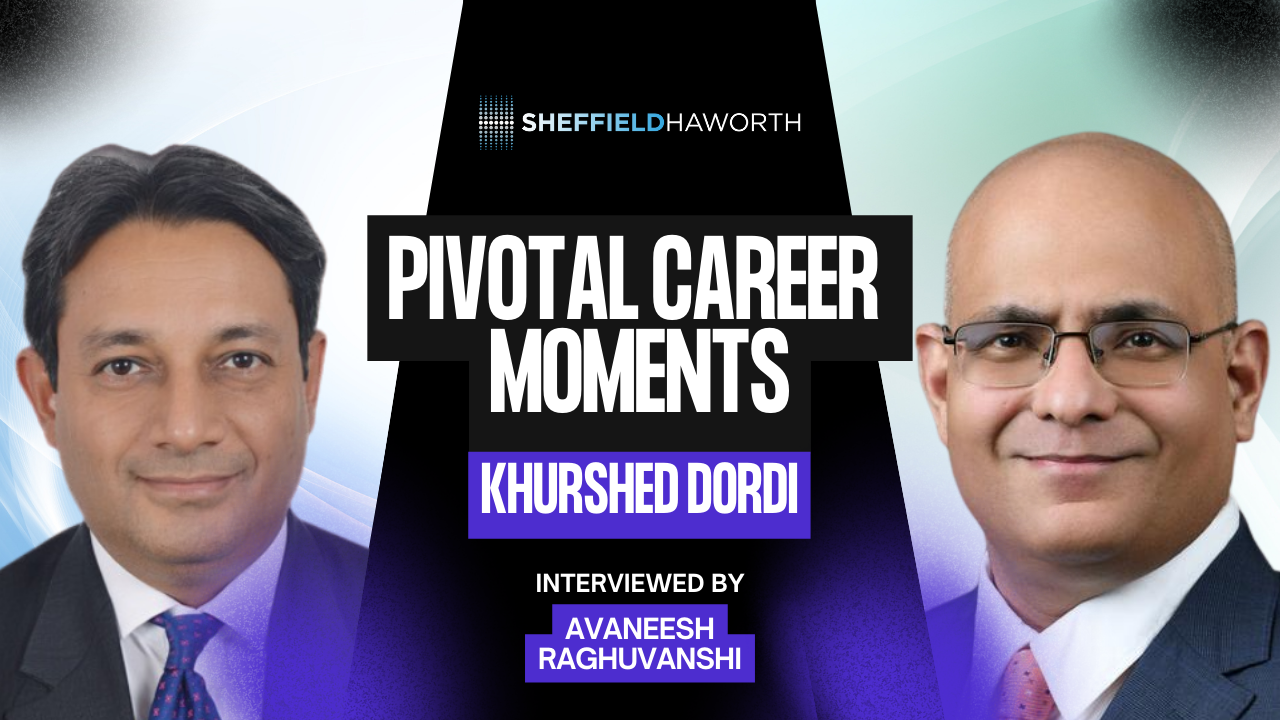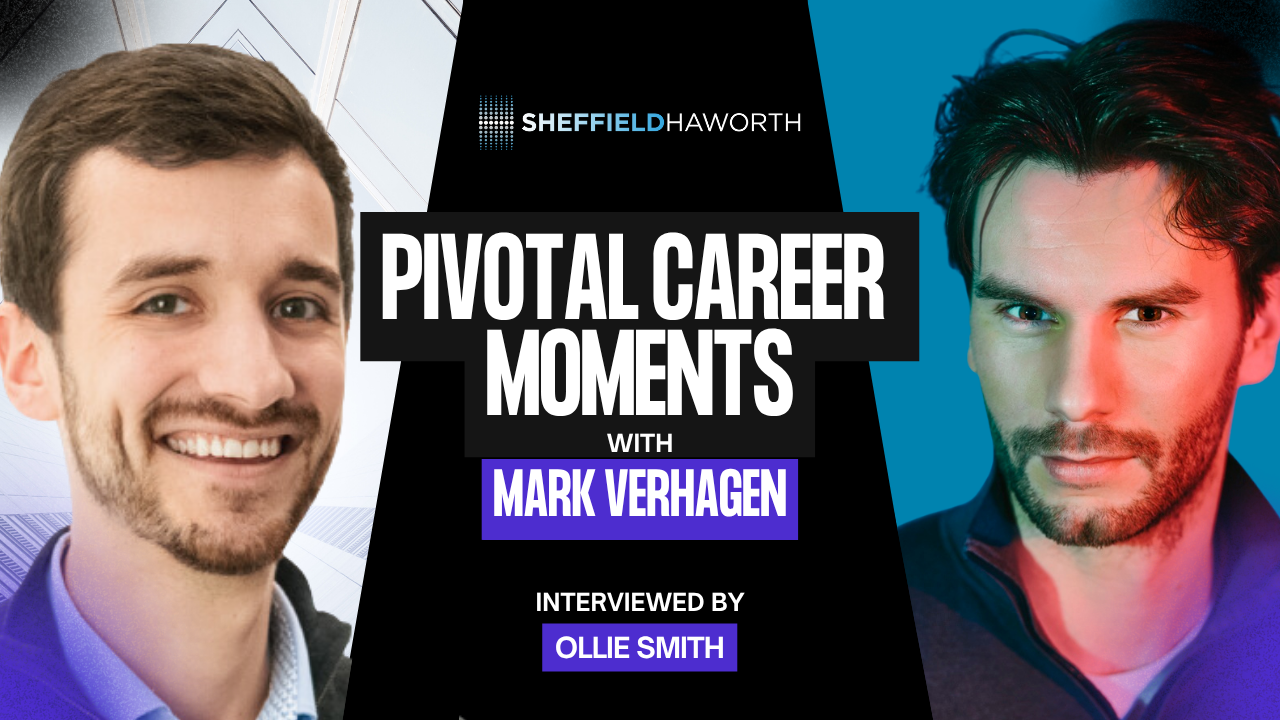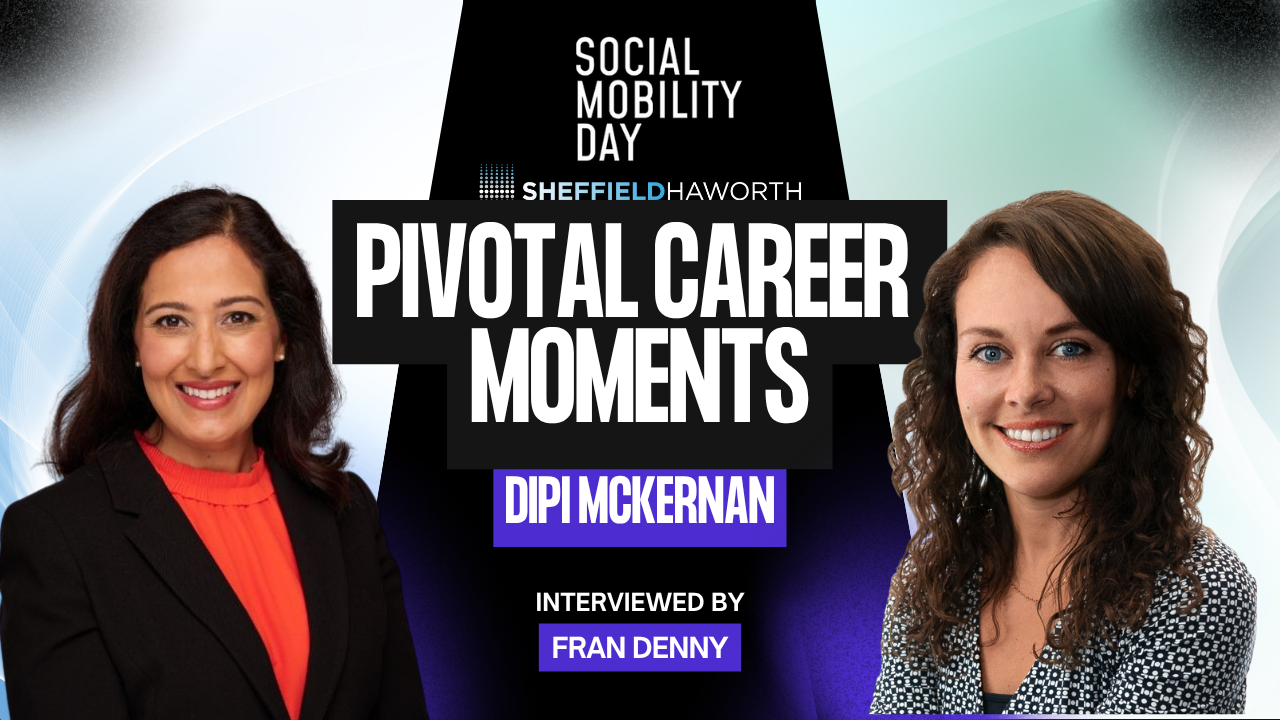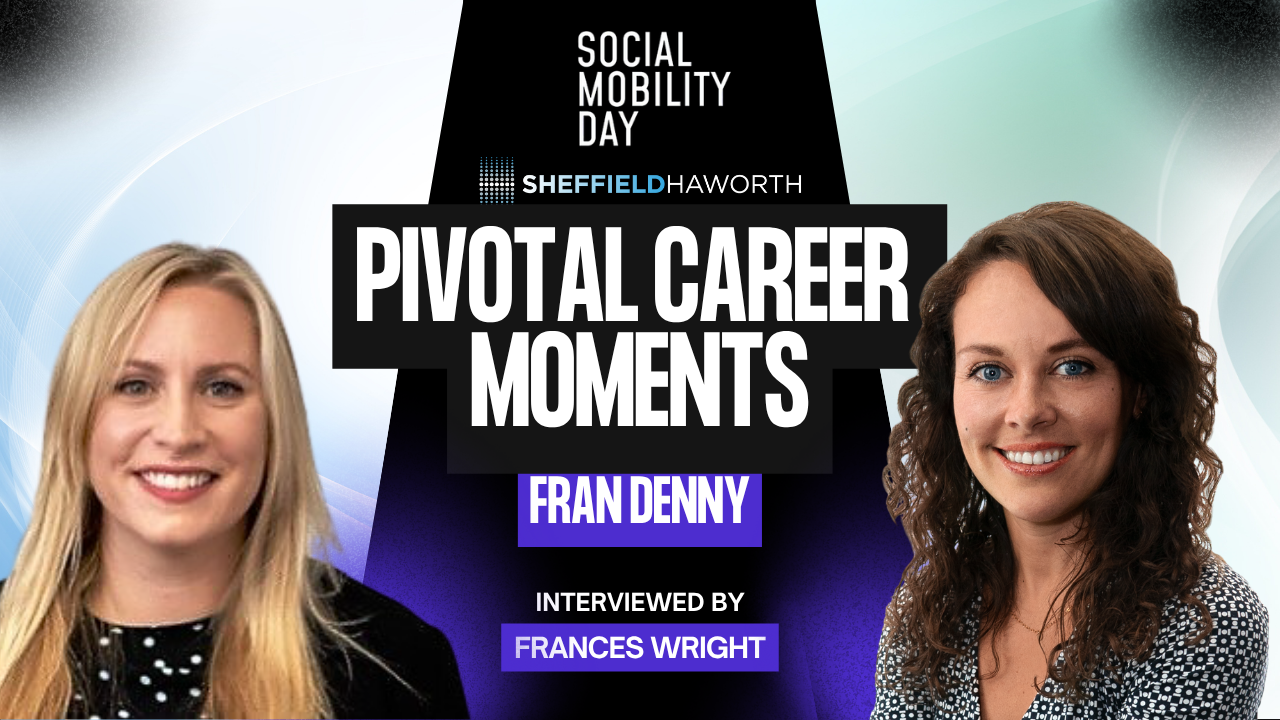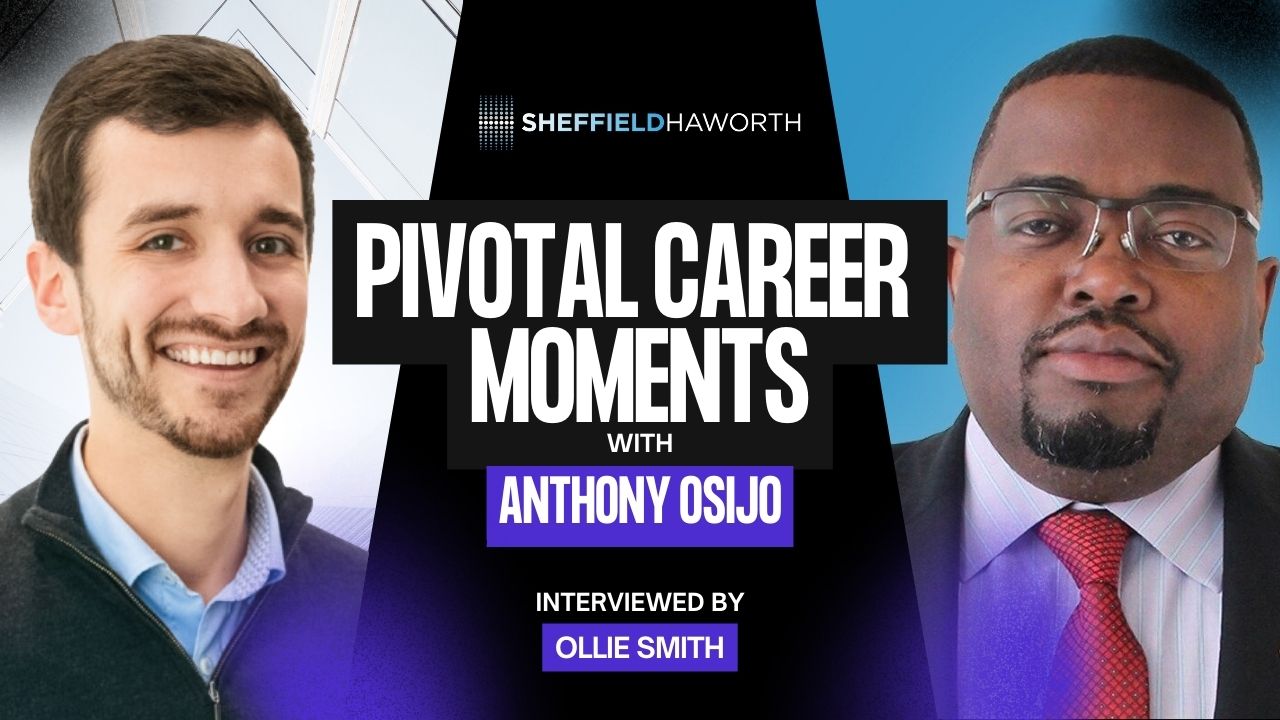Listen to the audio version of this article (generated by AI).
We recently spoke with Graham Ridgway, an experienced enterprise software company Chair and Advisor focused on helping domestic and international enterprise software businesses to achieve their goals. This is underpinned by a successful earlier career as a software CEO, with a proven track record of buying, growing, and developing international businesses, building high-performing teams and enhancing shareholder value both organically and by acquisition from “scale up” to successful exit.
With expertise in Healthcare, Life Sciences, Fintech, and IT Operations Management, Graham transitioned from Executive to Non-Executive roles four years ago after the successful sale of PE-backed Wellbeing Software to an Australian-listed PLC.
Introduction to the Interview
Welcome to Sheffield Haworth’s Pivotal Career Moments series, where we spotlight the defining milestones and transitions in the careers of prominent industry figures. In this instalment, Steve Morrison, Co-founder of our Technology practice, speaks with Graham Ridgway, Non-Executive Chair at Mayden. Graham shares how he evolved from a leadership style as a CEO and adapted it as a Non-Executive Chair, strategies for fostering effective teams, the challenges and opportunities facing healthcare software, and broader insights on embracing pivotal moments throughout a career.
Steve Morrison (Sheffield Haworth):
Graham, thank you for joining our Pivotal Career Moments series. Let us begin by looking back at your journey: you enjoyed a long and successful career as a CEO before transitioning to Non-Executive Chair roles. How did you navigate that shift?
Graham Ridgway:
I would say the first big lesson is that, as a Non-Executive Chair, you are no longer in charge in the way a CEO is. You are there to ensure that the right ingredients and structures are in place, not to put them in place yourself. Of course, there are exceptional times when a Chair may need to take a more “hands-on role”—such as changing board composition or steering major transformations—but that is not the day-to-day expectation.
When I was a CEO, my style eventually became more consensual: gather information, assess clearly, plan thoughtfully, act decisively, and then measure the results. My primary role was to create an environment in which talented people could excel. I was not always like that, though; early in my CEO career, I tried a more autocratic style, believing I had the best ideas, but it turned out that I was not a very good autocrat! I got far better results once I embraced a leadership style that allowed the team to flourish.
This made moving into Non-Executive roles more natural. You spend your time understanding the organisation’s strategic direction, working with the CEO and investors, and ensuring they have everything they need, but it is not about your direct involvement in delivering the outcomes. You also have more time to think, analyse, and consult—elements I find invaluable.
Another decision I made early on was to only take Non-Executive roles where I could genuinely add value and that were intellectually stimulating. I enjoy analysing, strategising, and planning, and having a genuine interest in the organisation’s focus and challenges which made the transition much smoother.
Steve: Which aspects of the Non-Executive Chair position do you most enjoy?
Graham: I love seeing a company grow and succeed, knowing that the strategic work we do at board level translates into tangible impact. There is a multiplier effect: as a CEO, your influence spreads through the teams you manage; as a Chair—especially if you are involved in multiple businesses—that influence is compounded further.
Perhaps the single best part is working with talented people, which allows me to keep learning. Continuous learning is a big driver for me—whether it is getting a coach to improve my skiing or working with a race coach on the track—and I apply the same principle to business. Being a Chair means I can keep developing my knowledge in a real environment rather than simply in a classroom setting. That combination of collaboration, mentorship, and personal growth is extremely rewarding.
Steve: You have worked with a diverse set of investors and boards. How do you adapt your approach to suit different stakeholders?
Graham:
Every situation is distinct. Different investors have different objectives, time horizons, and approaches to governance. The only real common thread is the pursuit of higher enterprise value (EV), but how that gets accomplished can vary dramatically. It is critical not to arrive with a “one size fits all” approach. Instead, I invest time in building relationships, learning what each party wants, and aligning this with the business context.
Patience is also crucial. Someone once told me, “Good beginnings are worth working for,” and that has stuck with me. It means you have to pace yourself—take time to learn, adapt, and establish solid foundations so you can help guide the organisation effectively.
Steve: Let’s talk about the healthcare software sector, where you are currently active. How has the change in UK Government affected your businesses, and what do you see as the main challenges and opportunities right now?
Graham:
It has never been an “easy” time in healthcare software, but the change in government coincided with a particularly challenging period. Coming out of Covid-19, there had been an intense focus on digitising certain critical services, which happened remarkably well under the circumstances. However, other digital initiatives were put on hold and still have not really found a stable footing in the so-called “new normal.”
The change of government brought delays and a shift in narrative; hearing constant messages about how the National Health Service (NHS) was “broken” demoralised many people who had worked tirelessly during the pandemic. On the positive side, we are now seeing a drive for more systematic digital transformation, including the use of artificial intelligence, enhanced workflows, and better patient engagement technologies. If this momentum continues, the “new
normal” might be one where digital solutions are routinely integrated into healthcare, making services both more efficient and more affordable.
Steve: This series focuses on defining career milestones. How would you define a pivotal career moment, and what advice would you give on recognising and embracing those turning points?
A pivotal career moment is any occasion that requires you to rethink your approach—whether that is your leadership style, strategic perspective, or fundamental beliefs. Some moments are well planned, such as deciding to step out of a CEO role into a Non-Executive role, while others happen suddenly due to market forces or investor pressure.
The key is remaining open to these signals and viewing challenges as catalysts for improvement. If you stay adaptable and reflective, you can turn those moments into positive milestones rather than drawbacks. That is where true leadership and development occur—when you learn to pivot effectively and help your team do the same.
In closing:
Graham’s career journey exemplifies how leadership transitions, thoughtful collaboration, and constant learning can shape long-term success across multiple roles and sectors. From evolving as a CEO to becoming a Non-Executive Chair, aligning with varied investor styles, and staying agile in the face of a changing healthcare landscape, his story underlines why being adaptable and reflective is so important for professional growth and organisational achievement.
About the Interviewer
Steve Morrison is now retired but he continues to advise our Sheffield Haworth technology practice. The Pivotal Career Moments series aims to highlight the key milestones and lessons learned by top professionals, offering valuable insights into leadership, resilience, and career progression.

